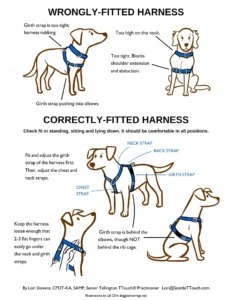
Happy, healthy pets on their best behavior
At CAC, we embrace the Fear Free Initiative and Low-Stress veterinary care. We believe that positive behavioral training is crucial for the happy and healthy life of your pet.
We offer advice on a wide variety of issues, from toilet training to excessive barking. View our resources below and talk to our veterinary team to learn how to train your pet in a compassionate, positive way.
Cat behavior
NORMAL CAT BEHAVIOR
Let’s be honest, cats can be a little mysterious, but many of their behaviors are actually completely normal. We’ll outline some of the normal things you may see your kitty do, and highlight some behaviors that might be abnormal.
Face rubbing – That’s called ‘bunting’! Cats have scent glands on their faces, so if they rub up on random objects (or you), they’re leaving their scent on you. Plus, it probably feels good.
Chasing smaller creatures – Cats are carnivores and natural hunters. If your kitty goes outdoors, there’s a good chance they’ll do some hunting while they’re out there. You’ll want to be extra cautious if you have any small rodents like hamsters or rats living with you since your cat might be extra interested in them. It’s a good idea to have toys that your cat can chase indoors, to keep them active and entertained!
Scratching – Cats often like to scratch or claw vertical surfaces – they often do it while stretching or playing, and it helps to keep their nails sharp. While this can be annoying and destructive, it’s perfectly normal behavior. To keep your cat from shredding your sofa, be sure they have access to a scratching post. You can also try using Feliway’s FeliScratch, which is a pheromone that attracts cats to scratch, on an appropriate scratching surface.
Urine marking – This is especially common in intact male cats. Intact cats will spray urine to mark their territory, which can be especially frustrating if their territory happens to be in your living room. Neutering tends to help with this behavior, although some training and behavior modification may be necessary if it continues.
Constant grooming – Healthy cats spend A LOT of time grooming, so if you feel like you see your cat constantly cleaning, don’t worry. Cats who live with other cats they’re friendly with will often groom each other, as well. If your cat begins to show signs of hair loss or irritation, a visit to your veterinarian might be warranted.
ABNORMAL CAT BEHAVIOR
Aggression – There’s a difference between rough play and aggression! Let’s be honest, some cats just may not get along, but sustained aggression towards other animals in the house, or humans, is abnormal and warrants a visit to your veterinarian. You’ll want to rule out any underlying medical issues that might be causing the aggressive behavior first, before considering it a behavioral issue.
Litterbox Avoidance – Using the bathroom outside the litterbox is one of the number one complaints among cat owners, and there can be numerous causes for this behavior. Underlying medical issues, such as Feline Lower Urinary Tract Disease, are common factors, but it can also be due to stress, substrate preference, cleanliness, or even pain (older kitties may struggle with tall litter pans). Your veterinarian should be your first stop when dealing with this behavior.
Pica – Some kitties make a regular habit of eating non-edible objects (such as hair ties), which can cause some serious intestinal issues. Sometimes this can be a compulsive issue, which may require further work-up by a veterinary behaviorist. Other times it’s a sign of a cat who may need a little more enrichment in their lives. Using alternative feeding setups, such as puzzle feeders, and setting aside plenty of time to play with your cat, can all keep them happier, more engaged, and maybe a little less apt to eat strange things around your house.
Additional cat behavior resources
Dog Behavior
Dog training from behavior modification, puppy training to dog tricks brought to you by world-renowned trainer Emily Larlham. Spreading the word on how to train dogs without the use of physical or psychological intimidation is her life’s work. Emily will show you a compassionate way to train puppies and dogs the basics as well as the advanced training without having to resort to intimidation.
When not making Youtube videos Emily spends her time teaching other trainers as well as speaking at dog training conferences and seminars in North and South America, Europe, Africa, Australia and Asia. Check out Emily’s online dog training courses and YouTube channel with over 100 videos on dog training, behavior modification training and puppy training.
DOG TRAINING WITH EMILY LARLHAM
REACTIVE DOGS EDUCATION
Leslie Sinn discusses The Reactive Dog at a recent workshop for Your Dogs Friend.
Part 1 of 3 – Learning how to use management to set your pet up for success.
Products and medications for reactive dogs.
Positive training foundations.
Punishment-Based Collars and Why They Should Be Avoided
Training collars, the phrase used for electric/”shock” collars and prong collars, fall into the category of aversive or punishment-based training. There are many scientific studies that show aversive training methods can increase fear and aggression and inhibit learning.
Training collars work by applying a punishment and stopping the behavior. While this might seem appropriate as stopping an unwanted behavior is the goal, these tools only suppress the behavior. By suppressing the behavior, no behavior modification is taking place.
Training collars do not change the underlying reason for the behavior or how the dog feels. Nothing is being done to address the fear, anxiety, or stress that is causing the behavior — which is what is driving the unwanted behavior in the first place.
Additionally, if the punishment is associated with growling or other warning signs in or outside of the veterinary hospital, your pet may learn to not give a warning before biting, resulting in a potentially dangerous situation.
Additional Information:
-
AVSAB Position Statement on Humane Training – American Veterinary Society of Animal Behavior
-
The Dangers of Training Collars – Fear Free
-
Study Outlines Reasons to Ban Electronic Collars for Dogs – Companion Animal Psychology
Recommended Products:
-
List of Trainers – CAC
-
Balance Harness – Blue-9
-
Front Range Harness – Ruffwear
-
Casual Padded Y-Harness – Hurtta
-
Loose Leash Walking Tips – Kikopup
Working with pet trainers
We recommend using Certified Professional Dog Trainers to help you with your dog’s behavioral challenges. Dog trainers are great for both the basics of dog training and giving them advanced training if required. Certified trainers can teach you how to train your dog without the use of physical or psychological intimidation.
For many behavioral issues and concerns – working with a good trainer can an invaluable resource for successful behavioral modification training. Desensitization/counter-conditioning training and teaching coping mechanisms are not always intuitive and when done incorrectly can have significant negative impacts.
Below we have listed trainers that we and our clients have worked with, know, and love as well as resources to help find a good trainer. Additionally, our very own technician, Alex Leslie, LVT, sees behavior appointments to work with clients and their pets on cooperative veterinary care, learning to settle and positively introducing basket muzzles as well as basic behavioral assessments. Alex is currently working on her MS in Applied Animal Behavior and ACAAB certification. If you would like to schedule an appointment with her, you can email them directly at alex@clarendonanimalcare.com.
Recommended pet trainers:
-
Behavior United – Group and Individual/Private Training
-
Dog Latin Dog Training – Group and Individual/Private Training
-
Eager Beagle Dog Training – Individual/Private Training – Licensed Family Paws Educator
-
Fur-Get Me Not – Group Training
-
Peaceable Paws – Group Training
-
Positive Dog Solutions – Private/Individual Training
-
Alexandra Dilley, MA Animal Behavior, CPDT-KA – Private/Individual Training – Separation Anxiety
-
dogTrained – Group and Individual/Private Training
-
Wholistic Hound Academy – Group and Individual/Private Training
-
Woofs! – Group Training
-
JW Training and Behavior Consulting – Private Training – Certified Behavior Consultant
-
Companion Animal Behavior – Cat training and behavioral work
-
Your Dog’s Friend – Workshops, classes and resources
-
Helping Pets Behave – Private Training – Fear Free Associate Certified Applied Animal Behaviorist
-
Paw Prints Around Town – Puppy Socials, Virtual classes, Pet Sitting
-
Best Behavior Cats – Feline Training!
-
Dances With Dogs – Private training and group walks
Find a pet trainer:
-
Finding the Right Trainer – Paws for Praise
-
Trainer Directory – Karen Pryor Academy
-
Certified Dog Trainer Directory – CCPDT
SHOULD A VETERINARY BEHAVIORIST BE INVOLVED?
Veterinary Behaviorists have achieved board-certification in the specialty of Veterinary Behavior. Board-certified specialists are known as Diplomates. These veterinarians work with individual pet owners, other animal professionals, and facilities that care for animals in order to manage behavior problems and improve the wellbeing of animals. Behavioral problems can result from a neurochemical imbalance, a medical condition, learned fearful associations, or conflict over rules and social structure. A Veterinary Behaviorist is in a unique position to diagnose medical conditions that can affect a pet’s behavior, as well as treat conditions that are purely behavioral.
Recommended veterinary behaviorists:
-
Dr. Amy Pike, DVM, DACVB, IAABC-CABC – Animal Behavior Wellness Center
-
Meaghan Ropski, DVM, DACVB – Friendship Hospital for Animals
Misc Behavior Resources
KIDS AND DOGS
-
Stop the 77 – The Family Dog
-
Prep Your Dog – Smart Dog University
-
Kids and Dogs Interaction – Dr. Sophia Yin
-
Life with Children and Dogs – Your Dogs Friend
-
Kids and Dogs – Dog Gone Crazy
MULTI DOG HOMES
-
Multi Dog Homes – Bad Rap
-
Proper Dog Introductions and Canine Socializing – Whole Dog Journal
RECOMMENDED LITERATURE
-
The Puppy Primer – Patricia McConnell
-
The Other End of the Leash – Patricia McConnell
-
For the Love of A Dog – Patricia McConnell
-
Feisty Fido: Help for the Leash Reactive Dog – Patricia McConnell
-
Family Friendly Dog Training – Patricia McConnell
-
The Cautious Canine – Patricia McConnell
-
I’ll Be Home Soon: How To Prevent and Treat Separation Anxiety – Patricia McConnell
-
Love Has No Age Limit: Welcoming An Adopted Dog Into Your Home – Patricia McConnell
-
How To Manage And Enjoy Your Multi-Dog Household – Patricia McConnell
-
Way To Go! How To Housetrain A Dog of Any Age – Patricia McConnell
-
Don’t Shoot The Dog! – Karen Pryor
-
Reaching The Animal Mind – Karen Pryor
-
How To Behave So Your Dog Behaves – Dr. Sophia Yin
-
Inside Of A Dog – Alexandra Horowitz
-
Fired Up, Frantic, and Freaked Out – Laura VanArendonk Baugh
-
Social, Civil, and Savvy – Laura VanArendonk Baugh
-
Decoding Your Dog – American College of Veterinary Behaviorists
-
Click To Calm: Healing the Aggressive Dog – Emma Parsons
-
Fight! A Practical Guide to the Treatment of Dog-Dog Aggression – Jean Donaldson
-
Mine! A Practical Guide to Resource Guarding in Dogs – Jean Donaldson
-
Culture Clash – Jean Donaldson
-
When Pigs Fly! Training Success With Impossible Dogs – Jane Killion
-
Control Unleashed: Creating a Focused and Confident Dog – Leslie McDevitt
“Just wow. We had an emergency with one of our kittens and called four places and the emergency vet and none could take us.
Clarendon Animal Care was so empathetic and agreed to take us at the end of the day. Every staff member-reception, techs, the vet—were so upbeat and friendly.”
— Emily Butler | Google Review



